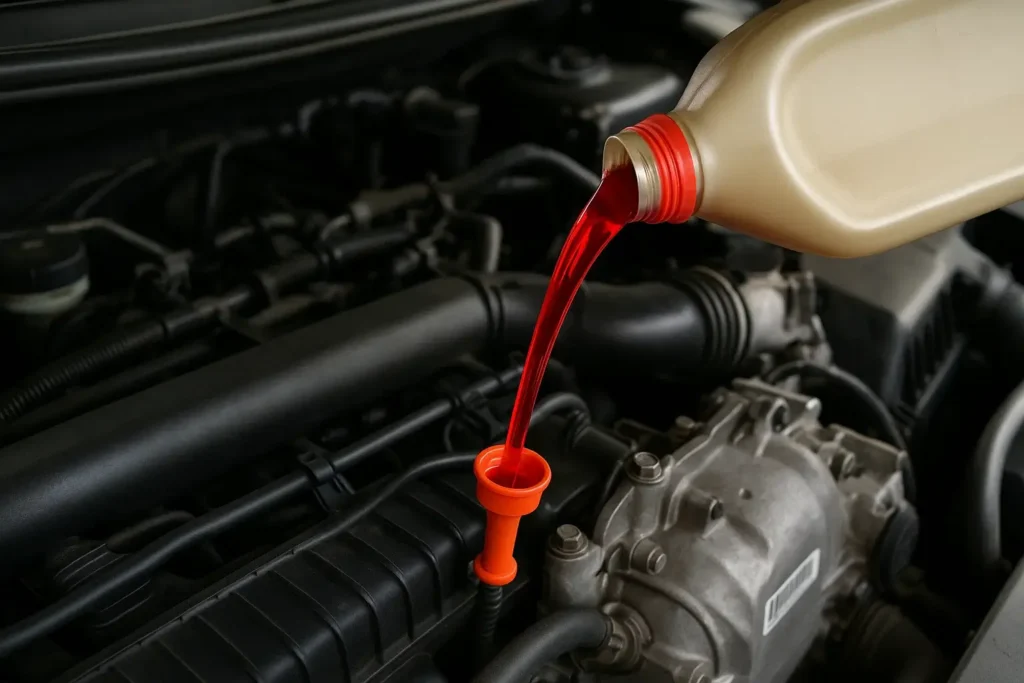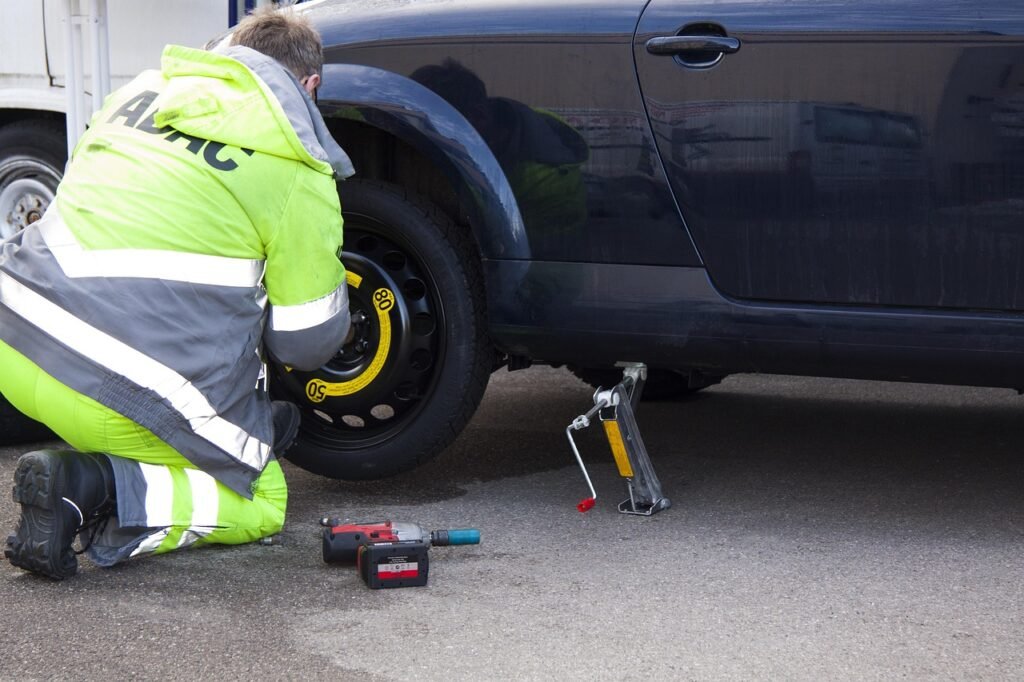If your car’s been shifting hard, hesitating between gears, or making unusual noises while driving, low transmission fluid could be the culprit. It plays a vital role in keeping your vehicle’s transmission system lubricated, cooled, and operating smoothly.
Adding it isn’t difficult—but it does require the right tools, a bit of patience, and attention to detail. In this guide, we’ll show you how to check and add transmission fluid step-by-step, when to seek professional help, and what mistakes to avoid.
Why Transmission Fluid Matters
Transmission fluid isn’t just lubricant—it’s a hydraulic fluid that:
- Allows smooth gear changes
- Reduces friction and heat
- Protects moving parts from wear
- Helps maintain optimal transmission performance
When fluid levels drop too low, your car may:
- Slip between gears
- Struggle to accelerate
- Overheat internally
- Experience long-term transmission damage
Topping off your fluid at the right time can help you avoid major repairs.
When Do You Need to Add Transmission Fluid?
You might need to add fluid if you notice any of the following:
- Delayed or rough gear shifts
- Transmission slipping out of gear
- Unusual noises or vibrations while accelerating
- Warning light on dashboard (for vehicles equipped with sensors)
- Transmission fluid level below the recommended range
Note: If your car is consistently low on fluid, you may have a leak—adding fluid won’t fix the root cause. In that case, consult a professional.
What You’ll Need Before You Start
Tools & Materials
- Transmission fluid (check owner’s manual for correct type)
- Long-neck funnel
- Clean rag or paper towels
- Owner’s manual (for reference)
- Jack and jack stands (only if access is limited)
Safety Gear
- Mechanic gloves
- Eye protection
- Flat, level parking surface
- Parking brake engaged

Interesting read: How Often to Change Synthetic Oil?
How to Check Your Transmission Fluid Level
Before adding fluid, you need to check the current level to avoid overfilling.
1. For Cars with a Transmission Dipstick
Most older and some modern vehicles have a dipstick specifically for transmission fluid. Here’s how to use it:
Step-by-Step:
- Start the engine and let the car idle. Transmission fluid must be checked warm (unless your owner’s manual says otherwise).
- Shift through all gears with your foot on the brake, then return to Park or Neutral.
- Open the hood and locate the transmission dipstick—usually labeled and found near the back of the engine.
- Pull out the dipstick, wipe it clean, and reinsert it fully.
- Pull it out again and check the fluid level against the “Hot” or “Full” marks.
If the level is below the recommended range, you’ll need to add fluid.
2. For Cars with a Sealed Transmission
Some modern vehicles have sealed transmissions with no dipstick. These require:
- Special tools and equipment
- Lifting the vehicle to access the fill/check plug
- Following strict temperature and level guidelines
⚠️ Important: If your car has a sealed transmission, do not attempt to add fluid yourself unless you’re experienced. Consult a mechanic.
How to Add Transmission Fluid (Step-by-Step)
If your dipstick reading is low and your transmission is not sealed, follow these steps:
Step 1: Insert Funnel into the Fill Port
The fill port is typically where the transmission dipstick sits. Insert a long, narrow funnel into the dipstick tube.
Step 2: Add Fluid Slowly
Pour in small amounts at a time (usually half a quart or less). Pause to check the level after each pour.
✅ Use only the fluid type recommended in your vehicle’s manual. The wrong fluid can damage your transmission.
Step 3: Recheck the Fluid Level
After adding fluid:
- Let the engine idle
- Shift through all gears again
- Recheck the dipstick
Continue adding until the fluid level is within the “Full” or “Hot” range.
Step 4: Finish Up
- Remove the funnel and reinsert the dipstick securely
- Wipe up any spills around the engine
- Close the hood properly
Common Mistakes to Avoid
- ❌ Using the wrong fluid — even small differences can damage your transmission
- ❌ Overfilling — leads to foaming, overheating, and pressure problems
- ❌ Adding cold fluid to a hot transmission — check the level when warm
- ❌ Confusing the oil dipstick with the transmission dipstick
- ❌ Ignoring symptoms of a deeper issue (like leaks or damage)
Which Transmission Fluid Should You Use?
Always use the manufacturer-recommended fluid listed in your owner’s manual. Common fluid types include:
- ATF+4
- Dexron/Mercon
- CVT (Continuously Variable Transmission) Fluid
- DCT (Dual-Clutch Transmission) Fluid
Never mix fluid types. If you’re unsure, consult a mechanic or parts retailer before purchasing.
When to See a Mechanic
Adding transmission fluid is a simple task for many vehicles—but not all. You should see a professional if:
- Your vehicle has a sealed transmission
- You suspect a leak, or fluid drains quickly after topping off
- The fluid appears burnt (dark, brownish, smells like burnt toast)
- The transmission shifts abnormally even after refilling
In these cases, topping off might not fix the issue and could even delay necessary repairs.
Transmission Maintenance Tips
- Check monthly or as part of your oil check routine
- Flush or replace fluid every 30,000–60,000 miles depending on your vehicle
- Avoid overheating by maintaining proper fluid levels
- Address warning signs early—don’t wait for shifting problems to get worse
Conclusion
Adding transmission fluid is a crucial maintenance task that helps keep your vehicle shifting smoothly and running efficiently. With the right tools, knowledge, and precautions, it’s something most car owners can do themselves.
Remember to:
- Use the correct fluid type
- Check levels accurately
- Avoid overfilling
- Know when to call a professional
Keeping your transmission healthy is one of the best ways to extend your vehicle’s life and avoid costly repairs.



